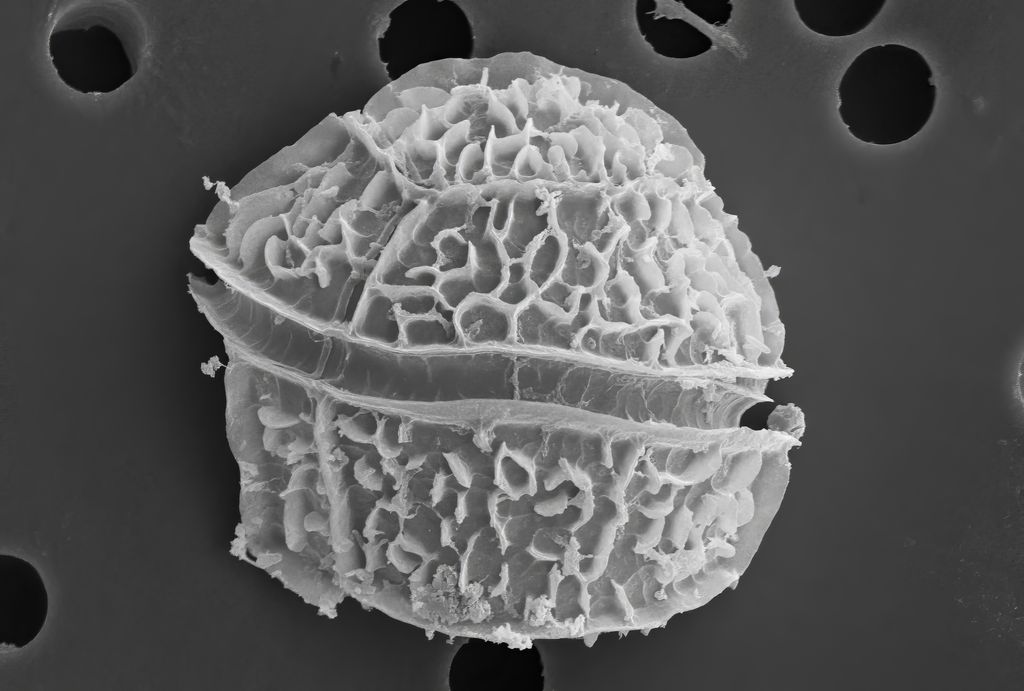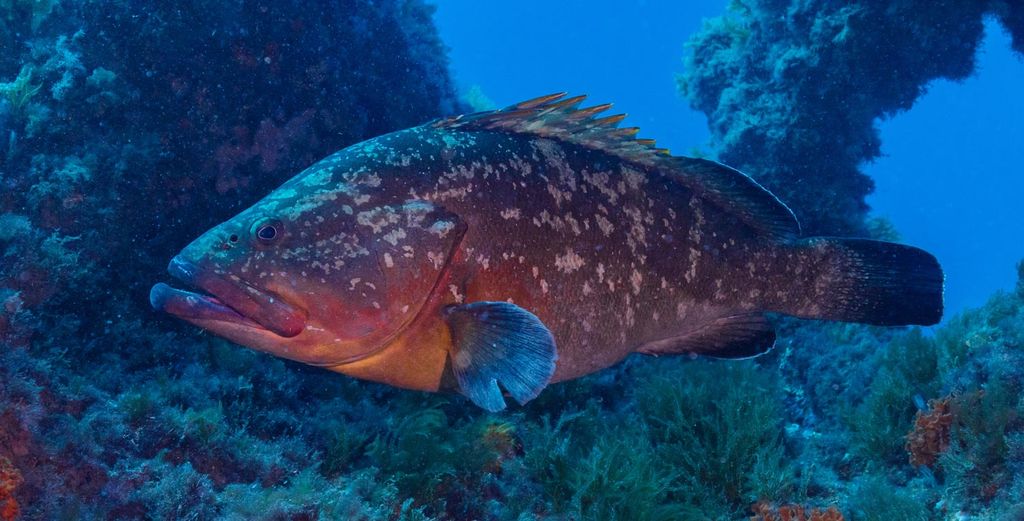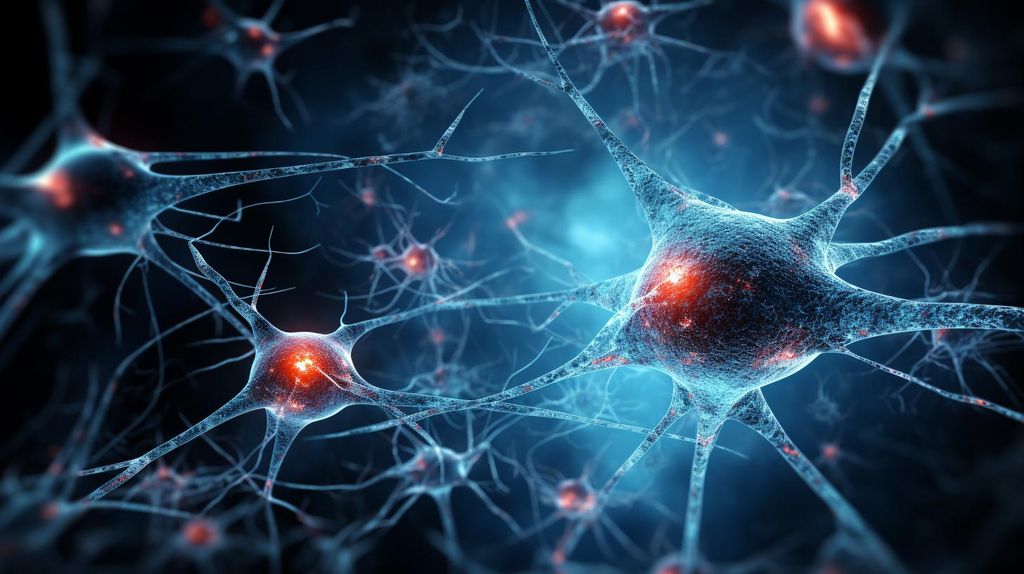Ciguatera Poisoning and Sushi: Risks and Protective Measures
Between the Pleasure of Sushi and Danger: Essential Facts and Tips for Preventing Tropical Fish Poisoning

Ciguatera poisoning, a form of foodborne intoxication resulting from the consumption of fish, is pervasive worldwide and particularly affects connoisseurs of seafood and sushi. The ingestion of contaminated fish harboring the toxin ciguatoxin precipitates this specific affliction. Given that sushi is predominantly crafted from fish, understanding the potential risks of ciguatera is of paramount importance. This article explores the connections between ciguatera and the consumption of sushi, providing insights into prevention and the safe handling of fish to minimize the danger of poisoning.
Table of Contents
What is Ciguatera? An Insight into Its Toxicology
Ciguatera, or Ciguatera Fish Poisoning (CFP), is a foodborne disease transmitted through the consumption of reef-dwelling fish whose flesh is contaminated with specific toxins. Ciguatoxin lowers the threshold of voltage-gated sodium channels in neuronal membranes, inducing depolarization and thereby triggering the release of gamma-aminobutyric acid and dopamine. Consequently, afflicted individuals exhibit a variety of neurological symptoms.[1]
The toxins responsible for this ailment are ciguatoxin and maitotoxin. These toxins are predominantly produced by a diminutive marine microalga named Gambierdiscus toxicus, which thrives in tropical and subtropical waters surrounding coral reefs. Gambierdiscus belongs to the genus of benthic dinoflagellates, which are of particular significance in the manifestation of ciguatera. However, other algal species can also precipitate ciguatera.[2]
These microalgae adhere to various substrates such as algae, seagrasses, and coral structures. Herbivorous fish that feed on these algae and seagrasses ingest the dinoflagellate microalgae. These fish are subsequently preyed upon by larger predatory fish, leading to an accumulation of toxins within the food chain. The presence and concentration of, for example, Gambierdiscus can be influenced by diverse environmental factors, including water temperature, light availability, and nutrient concentrations. Additionally, it is hypothesized that the destruction of coral reefs may induce changes in ecosystem dynamics that favor the proliferation of these microalgae, potentially elevating the risk of ciguatera in specific regions.[3]

Nicola Angeli/MUSE. Dinoflagellate - SEM MUSE. Nicola Angeli/MUSE. Some rights reserved: CC BY-SA 3.0. Changes applied: crop, noise
Approximately 400 fish species have been identified with detectable levels of ciguatoxins.[4] While these fish do not synthesize the toxins themselves, they accumulate them through their diet. Fish inhabiting coral reefs and subsisting there, such as groupers, tend to harbor higher concentrations of ciguatoxins. Commonly affected species also include barracudas, moray eels, and amberjack. Ciguatoxins are heat-stable, odorless, and tasteless lipophilic compounds, rendering them impervious to conventional cooking methods. These toxins adversely affect the nervous and muscular functions within the human body. Symptoms of ciguatera vary and may include diarrhea, vomiting, numbness, itching, temperature sensitivity, dizziness, and weakness. The onset of symptoms is contingent upon the ingested toxin quantity and can range from half an hour to a day.[5] In certain instances, symptoms may persist for weeks to months.
The term “Ciguatera” originates from Spanish settlers in Cuba, who referred to a type of food poisoning caused by consuming a locally known snail (Cittarium pica) as “Ciguatera”.[6] For an extended period, the mechanism underlying toxin formation in seafood remained elusive. However, in 1977, a research team, including members from Tohoku University, confirmed that Gambierdiscus toxicus, a species of dinoflagellate, was the culprit and that the toxin accumulates in seafood through biomagnification.[7] Historical evidence of ciguatera poisonings can be traced back to 1774, as documented in the journals of Captain James Cook.[8]
How Ciguatoxin Accumulates in the Food Chain
Ciguatoxin, a marine biotoxin that bioaccumulates within organisms through dietary intake, becomes increasingly concentrated within the food chain as predatory fish consume smaller fish that have already ingested ciguatoxins, thereby amassing greater quantities of the toxin. This process, known as biomagnification, contributes to elevated toxin concentrations at higher trophic levels within the food chain.

Diego Delso. Mero (Epinephelus marginatus), Cabo de Palos, España, 2022-07-15, DD 46, Crop. commons.wikimedia.org. Some rights reserved: CC BY-SA 4.0
At the base of the food chain reside microscopic marine organisms known as dinoflagellates, with Gambierdiscus being a significant genus concerning ciguatera. These dinoflagellates produce ciguatoxins and are prevalent in tropical and subtropical waters surrounding coral reefs. Herbivorous fish feeding on algae and other organisms near coral reefs ingest these dinoflagellates, resulting in the accumulation of modest amounts of ciguatoxins within their tissues. When predatory fish higher in the food chain consume these herbivorous fish, they assimilate not only the ciguatoxins accumulated in the tissues of the herbivores but also those that accumulate within their own tissues over time. This leads to higher concentrations of ciguatoxins in predatory fish. Ultimately, humans at the pinnacle of the food chain may ingest potentially harmful amounts of ciguatoxins by consuming contaminated fish, such as groupers or moray eels.
The concentration of ciguatoxins in fish and its correlation with fish size appears to vary regionally. A study conducted in Hong Kong revealed that over 80 % of reef fish associated with ciguatera outbreaks weighed more than 2 kilograms. This suggests that avoiding fish exceeding 2 kilograms in Hong Kong could be a prudent precautionary measure. Nevertheless, fish weighing 0.6 kilograms or less have also been linked to ciguatera.[9]
In contrast, the study by Gaboriau et al., 2014 in French Polynesia found that fish size could not serve as an effective predictor of toxicity. Intriguingly, this study observed that the proportion of toxic individuals did not increase with size for any of the species examined and, for some species, even decreased as size increased.[10]
These discrepancies suggest that regional factors such as fish species, environmental conditions, and possibly metabolic processes in different species may influence the bioaccumulation of ciguatoxins. The data underscore the necessity for in-depth research into the underlying mechanisms of ciguatoxin accumulation in fish, and highlight that simplistic recommendations based solely on fish size may be insufficient.
Symptoms and Diagnosis of Ciguatera Poisoning

Sushipedia. Medical Examination for Fish Poisoning. All rights reserved ©
Ciguatera poisoning manifests through a spectrum of symptoms that may vary but typically encompass gastrointestinal, neurological, and cardiovascular disturbances. Gastrointestinal symptoms often emerge early and can include diarrhea, vomiting, and nausea. Neurological symptoms may involve tingling, itching, numbness, and an unusual sensitivity to temperature changes, particularly the perception of cold as heat. Cardiovascular symptoms are rare but can include bradycardia and hypotension. Some neurological symptoms may persist for weeks or even months following the initial exposure to ciguatoxins.
The interval between consuming contaminated fish and the onset of symptoms can vary, typically occurring within a few hours to two days. The severity of symptoms depends on the ingested toxin quantity. Diagnosis of ciguatera poisoning is primarily based on clinical symptoms coupled with a history of recent fish consumption, particularly reef fish. A diagnosis can be corroborated by reports of similar symptoms in others who consumed the same fish. Currently, there are no standardized laboratory tests for ciguatoxins widely available in clinical settings. Occasionally, remaining fish, if available, can be tested for ciguatoxins to support the diagnosis. It is crucial to be aware of the potential symptoms of ciguatera poisoning and to seek medical assistance promptly if exposure is suspected. As there is no specific antitoxin treatment for ciguatera, medical care focuses on alleviating symptoms and supporting the affected individuals during the recovery phase.
The Neurotoxicological Impact of Ciguatoxin: Insights into Sodium Channel Modulation
Ciguatoxin is the primary toxin associated with ciguatera fish poisoning. Understanding its effects on the neural network is crucial for comprehending the pathophysiology of this disease.

Sushipedia. Effect of Ciguatera Toxin on Nerve Cells. All rights reserved ©
Neurons, the fundamental units of the nervous system, are responsible for transmitting electrical signals throughout the body. The plasma membrane of these cells houses various ion channels, including voltage-gated sodium channels, which are pivotal for generating action potentials—the basis of neural signaling. Ciguatoxin specifically interacts with voltage-gated sodium channels by modulating their threshold potential. Under normal conditions, these channels open only upon reaching a specific membrane voltage. However, ciguatoxin lowers the threshold potential, causing the channels to activate more readily and allowing increased influx of sodium ions into the cell. This results in hyperactivation of the neuron, known as depolarization. Depolarization leads to altered release of neurotransmitters, including gamma-aminobutyric acid (GABA) and dopamine. These neurotransmitters are critical in neural signal transmission and influence a myriad of physiological processes. The uncontrolled release of neurotransmitters in response to ciguatoxin-induced depolarization can have significant repercussions on the nervous system, including disruption of sensory perception and gastrointestinal functions.[11][12][13]
Given the profound impact of ciguatoxin on neuronal function and the resultant clinical manifestations of ciguatera fish poisoning, it is paramount for research to thoroughly elucidate the molecular interplay between ciguatoxin and sodium channels. This not only enhances our understanding of the pathophysiology but also is integral to the development of targeted therapeutic strategies for treating this poisoning.
The Connection Between Ciguatera and Sushi: Fish as the Common Denominator
Sushi is a traditional Japanese cuisine that often incorporates raw fish. Given that sushi is frequently prepared using marine fish inhabiting coral reefs, it is essential to consider the fish's origin. Species such as the grouper (hata ハタ), moray eel (utsubo ウツボ), amberjack (buri ブリ), and barracuda (kamasu カマス) are known to accumulate ciguatoxins. These toxins, as previously mentioned, are heat-stable, odorless, and tasteless, persisting even in raw fish.
In the context of sushi preparation, this implies that fish caught in regions where ciguatoxin-producing microorganisms like Gambierdiscus are present pose a potential risk for ciguatera fish poisoning. Ciguatoxin cannot be eliminated through cooking, and thus remains intact in raw fish used in sushi.
A critical factor heightening the risk of ciguatera poisonings is the mislabeling of imported fish. A study examining 975 individual fish imports at Frankfurt Airport over three years found that 31 % of the fish were mislabeled. Notably, the prevalence of ciguatera-susceptible species among DNA-identified, mislabeled fish was significantly higher (46 %) compared to correctly labeled fish (17 %). This mislabeling, often affecting tropical snappers and groupers, represents an underestimated health risk for seafood consumers. Mislabeling can result in consumers inadvertently ingesting fish susceptible to ciguatera. This underscores the importance of vigilance and informed decision-making when selecting fish for sushi. It also highlights the necessity for restaurants and vendors to utilize reliable sources and be cognizant of potential risks.[14]
Geographical Risk Factors: Origins of Hazardous Fish

Sushipedia. Distribution and expansion area of Ciguatera. All rights reserved ©
Ciguatera poisonings occur more frequently in specific geographical regions than others. The presence of ciguatoxins in fish is closely linked to the occurrence of Gambierdiscus-producing toxin microorganisms, which thrive in tropical and subtropical waters surrounding coral reefs. Consequently, fish inhabiting these areas and feeding on organisms within or around coral reefs are potentially contaminated with ciguatoxins.
The Pacific Islands, particularly Polynesia, Melanesia, and Micronesia, as well as the Caribbean Sea and the Indian Ocean, are regions where ciguatera poisonings are more frequently reported. Within these oceans, affected areas predominantly lie between the latitudes of 35°N and 35°S, corresponding to tropical and subtropical zones.[15]
It is important to note that the geographical origin of a fish may not necessarily correspond to the location where it is consumed due to the global trade in seafood. Fish caught in regions known for ciguatera poisoning can be sold worldwide. Therefore, consumers are advised to be informed about the origin of their fish and exercise caution when purchasing fish from high-risk areas. Additionally, environmental factors such as coral reef degradation and climate change can influence the prevalence of ciguatera by promoting the growth of toxin-producing microorganisms. This underscores the necessity for ongoing monitoring and research into the environmental conditions associated with ciguatera poisonings.
Ciguatera in Europe: Scientific Initiatives for Prevention and Monitoring

Simo Räsänen. Seixal village as seen from air above the ocean in Porto Moniz, Madeira, Portugal, 2023.. commons.wikimedia.org. Some rights reserved: CC BY-SA 4.0. Changes applied: crop, noise
Ciguatera, once considered a phenomenon confined to specific global regions, is gaining prominence in Europe. Notably, since 2008, outbreaks of ciguatoxin poisonings have been reported in Spain and Portugal on the Canary Islands and Madeira, respectively, and Germany has documented annual ciguatera infections since 2012. To address this growing health threat, the EuroCigua Project was initiated. The project's primary objectives include collecting data on the prevalence of ciguatera cases, developing and establishing reliable analytical methods for detecting ciguatoxin in fish and microalgae, and investigating the temporal and spatial distribution of Gambierdiscus spp., the microorganism responsible for producing ciguatoxins.[16]
In Europe, outbreaks of ciguatera poisoning are attributed both to the consumption of fish caught within the EU (autochthonous outbreaks) and to the ingestion of imported fish. The autochthonous outbreaks have been reported solely from Spain (Canary Islands) and Portugal (Madeira). Regarding outbreaks from imported fish, the majority of cases have been reported in Germany and France, with the Netherlands recording an outbreak in 2020. Among EU-caught fish, groupers (Epinephelus marginatus), moray eels (Enchelycore spp.), two-banded seabreams (Diplodus vulgaris), and amberjack (Seriola spp.) have been most frequently associated with ciguatera, while imported fish, particularly the genus Lutjanus introduced from India and Vietnam, have been predominantly affected.[17]
The analysis of ciguatoxins proves to be particularly challenging, as the toxins are effective at low concentrations and exhibit varied chemical structures. Currently, there is no standardized analytical method for routine testing of fish for ciguatoxins.
A focal point of the EuroCigua Project is the prevention of ciguatera poisonings. Informational materials, including a leaflet with recommendations, have been developed. The recommendations advise against consuming the innards of tropical predatory fish, which can contain high concentrations of ciguatoxins. It is also emphasized that ciguatoxin is heat-stable and cannot be destroyed through cooking. Given that the toxin is colorless, odorless, and tasteless and cannot be detected by the naked eye, it is recommended to seek immediate medical assistance upon experiencing symptoms, including gastrointestinal and neurological disturbances, and to inform the relevant authorities.
Prevention and Education: Enjoying Sushi Safely
The estimated global incidence of ciguatera ranges annually from 20,000 to 50,000 individuals, with many cases likely going unreported.[18][19] Ciguatera primarily occurs in subtropical and tropical waters, especially in the Pacific and Caribbean, with the export of reef fish frequently responsible for cases in other regions. The likelihood of contracting ciguatera depends on various factors, including geographical location and the type of fish consumed. In regions with tropical and subtropical waters, particularly in the Pacific and Caribbean, the risk is generally higher. Additionally, the probability increases when consuming certain fish species such as groupers that inhabit reefs. To minimize the risk of ciguatera poisoning when consuming sushi, prevention, and education are fundamentally essential. It is important to be knowledgeable about which fish species might be contaminated and to make informed decisions regarding consumption.
- Firstly, restrict the consumption of specific fish species known to carry a higher risk of ciguatoxin contamination, including barracudas, certain types of groupers, and moray eels. It is advisable to obtain information about the fish species used in dishes before purchasing or ordering sushi.
- Secondly, it is prudent to be informed about the origin of the fish. As previously mentioned, fish from certain geographical areas are more susceptible to ciguatoxin contamination. When possible, opt for fish sourced from regions not recognized as high-risk zones for ciguatera.
- Thirdly, it is important to recognize that conventional preparation methods, including cooking, do not eliminate ciguatoxin. Therefore, one should not assume that heating the fish provides adequate protection.
Educating consumers and culinary establishments about ciguatera and its associated risks is equally important. Restaurants and their staff should receive specialized training to heighten awareness of ciguatera and to competently advise their patrons. This is especially pertinent for establishments importing fish from high-risk zones, for instance, as frozen goods, and for those preparing sushi with fish sourced from affected areas. In summary, ciguatera presents an inherent risk when consuming reef fish, particularly those originating from potentially affected regions. Although the likelihood of ciguatera poisoning is relatively low, it is imperative to be cognizant of this risk. Despite efforts to enhance the detection and prevention of ciguatera, including the identification and accurate labeling of fish, there is no absolute safeguard against this form of foodborne illness. Solely abstaining from consuming reef fish from high-risk areas offers absolute protection against ciguatera. Therefore, every consumer should make informed decisions regarding fish consumption, weighing the potential risks against the benefits.
Frequently Asked Questions (FAQ)
-
What is ciguatera poisoning?
Ciguatera poisoning is a foodborne illness caused by toxins from certain reef fish. These toxins originate from algae that smaller fish eat. Larger predators accumulate the toxins in their flesh. These toxins accumulate in certain fish and are not detectable by taste, smell, or appearance, meaning the fish looks and tastes normal.[20]
-
Which fish pose a higher risk of ciguatera poisoning?
Reef fish such as grouper or barracuda carry the highest risk. Although these species appear less frequently in traditional sushi menus, some restaurants may serve them. By contrast, popular sushi fish like tuna or salmon live in open-ocean or cold waters and are not typically associated with ciguatera poisoning.
-
Can cooking or freezing eliminate ciguatera toxins?
No. Ciguatera toxins are heat-stable and resist freezing. Neither cooking nor cold storage neutralizes them.
-
How quickly do symptoms appear?
Symptoms often begin within a few hours. They may include gastrointestinal distress, neurological issues, or a characteristic reversal of hot and cold sensations.
-
Can ciguatera fish poisoning be life-threatening?
Fatalities from ciguatera are very rare. The illness can be extremely uncomfortable and debilitating, but the risk of death is estimated at around only 0.1% (less than 1 in 1,000 cases).[21]
-
Are there long-term effects?
Some individuals experience lingering neurological symptoms. These can last days, weeks, or even months, depending on toxin exposure and personal susceptibility.
-
Does medical treatment exist?
Medical professionals treat symptoms. Antihistamines, fluids, and supportive care are common. No direct antidote exists.
-
How can consumers protect themselves?
Purchase seafood from trusted providers. Learn which fish are prone to ciguatera. Practice caution when traveling in tropical regions. If in doubt, ask questions about fish species and sourcing.
-
How common are ciguatera poisoning cases from eating sushi?
For the average sushi consumer, ciguatera poisoning is quite rare, but the risk isn’t zero. Globally, ciguatera is the most common fish-borne poisoning in tropical areas, with an estimated 10,000–50,000 cases per year around the world.
References and Further Reading
- [1]akashi Watari, Takayuki Tachibana, Azusa Okada, Kasumi Nishikawa, Kazuya Otsuki, Nobuhiro Nagai, Haruki Abe, Yasuhisa Nakano, Soshi Takagi, Yu Amano. A review of food poisoning caused by local food in Japan. Journal of General and Family Medicine 22 (1) 1-64. 2021. DOI: https://doi.org/10.1002/jgf2.384.
- [2]R. Bagnis, S. Chanteau, E. Chungue, J.M. Hurtel, T. Yasumoto, A. Inoue. Origins of ciguatera fish poisoning: a new dinoflagellate, Gambierdiscus toxicus Adachi and Fukuyo, definitively involved as a causal agent. Toxicon 18 (2). 1980. DOI: https://doi.org/10.1016/0041-0101(80)90074-4.
- [3]Yixiao Xu, Mindy L. Richlen, Justin D. Liefer, Alison Robertson, David Kulis, Tyler B. Smith, Michael L. Parsons, Donald M. Anderson. Influence of Environmental Variables on Gambierdiscus spp. (Dinophyceae) Growth and Distribution. PLoS One 11 (4). 2016. DOI: https://doi.org/10.1371/journal.pone.0153197.
- [4]Leigh Lehane, Richard J. Lewis. Ciguatera: recent advances but the risk remains. International Journal of Food Microbiology 61. 2000. DOI: https://doi.org/10.1016/S0168-1605(00)00382-2.
- [5]Rajendra Raman, Sarah Coppes, Tessa Hellingman, Casper Laclé. Junctional bradycardia caused by ciguatera intoxication. BMJ Case Rep 12 (5). 2019. DOI: https://dx.doi.org/10.1136/bcr-2019-229354.
- [6]N W Withers. Ciguatera Fish Poisoning. Annual Review of Medicine 33 97-111. 1982
- [7]K. Koike. シガテラと底生渦鞭毛藻 (Ciguatera and its causative benthic dinoflagellates). みどりいし 5 19-22. 1994
- [8]M. Chinain, C.M. Gatti, M. Roué, H.T. Darius. Ciguatera poisoning in French Polynesia: insights into the novel trends of an ancient disease. New Microbes and New Infections 31. 2019. DOI: https://doi.org/10.1016/j.nmni.2019.100565.
- [9]Thomas Y. K. Chan. Ciguatera Fish Poisoning in East Asia and Southeast Asia. Marine Drugs 13 (6). DOI: https://doi.org/10.3390/md13063466.
- [10]Matthias Gaboriau, Dominique Ponton, H. Taiana Darius, Mireille Chinain. Ciguatera fish toxicity in French Polynesia: Size does not always matter. Toxicon 84 41-50. 2014. DOI: https://doi.org/10.1016/j.toxicon.2014.03.006.
- [11]Killian L’Herondelle, Matthieu Talagas, Olivier Mignen, Laurent Misery, Raphaele Le Garrec. Neurological Disturbances of Ciguatera Poisoning: Clinical Features and Pathophysiological Basis. Cells 10 (9). 2020. DOI: https://doi.org/10.3390/cells9102291.
- [12]Graham Michael Nicholson, Richard J Lewis. Ciguatoxins: Cyclic Polyether Modulators of Voltage-gated Iion Channel Function. Marine Drugs 4 (3). 2006. DOI: https://doi.org/10.3390/md403082.
- [13]R J Lewis, R Endean. Mode of action of ciguatoxin from the Spanish Mackerel, Scomberomorus commersoni, on the guinea-pig ileum and vas deferens.. Journal of Pharmacology and Experimental Therapeutics 228 (3) 756-760. 1984
- [14]Henrik Kusche, Reinhold Hanel. Consumers of mislabeled tropical fish exhibit increased risks of ciguatera intoxication: A report on substitution patterns in fish imported at Frankfurt Airport, Germany. Food Control 121. 2021. DOI: https://doi.org/10.1016/j.foodcont.2020.107647.
- [15]Jose-Luis Pérez-Arellano, Octavio P. Luzardo, Ana Pérez Brito, Michele Hernández Cabrera, Manuel Zumbado, Cristina Carranza, Alfonso Angel-Moreno, Robert W. Dickey, Luis D. Boada. Ciguatera Fish Poisoning, Canary Islands. Emerging Infectious Diseases 11 (12) 1981-1982. 2005. DOI: https://doi.org/10.3201%2Feid1112.050393.
- [16]Anstieg von Ciguatera-Fischvergiftungen in Europa (Increase in ciguatera fish poisoning in Europe.). Bundesinstitut für Risikobewertung (BfR). 2017. Source retrieved 6/21/2023
- [17]Ana Canals Caballero. Risk Characterization Of Ciguatera Food Poisoning In Europe (GP/EFSA/AFSCO/2015/03), EuroCigua, 79th MEETING OF THE EFSA ADVISORY FORUM 3-4 March 2021. 2021
- [18]Erin N Marcus. Ciguatera Fish poisoning. UpToDate. Wolters Kluwer; Alphen aan den Rijn, The Netherlands, 2021. Source retrieved 6/21/2023
- [19]Heng Gee Lee, Chui Pin Leaw, Po Teen Lim, Steffiana J Jipanin. Ciguatera fish poisoning: First reported case in Sabah, Malaysia. The Medical journal of Malaysia 74 (6) 545-546. 2019
- [20]Food Poisoning from Seafood. U.S. Centers For Disease Control and Prevention, 2022-03-30. Source retrieved 4/14/2025
- [21]Vernon Ansdell. Food Poisoning from Marine Toxins. CDC Yellow Book 2024.. U.S. Department of Health & Human Services, 2023-05-01. Source retrieved 4/14/2025
- Charles Patrick Davis, Jerry R. Balentine (Ed.). Digestive Disorders Center - Ciguatera Fish Poisoning. eMedicineHealth.com, WebMD LLC, 2021-10-12
- Clémence Mahana iti Gatti, Mireille Chinain, Erwan Oehler. Ciguatera worldwide distribution. Conference of Dr. Mireille Chinain (Louis Malardé Institute) about the status of Ciguatera on a global scale.( june 2021). Louis Malardé Institute. 2020. Source retrieved 6/21/2023
- Richard J. Lewis. The changing face of ciguatera. Toxicon 39 (1) 97-106. 2001. DOI: https://doi.org/10.1016/S0041-0101(00)00161-6.
- Anstieg von Ciguatera-Fischvergiftungen in Europa (Increase in ciguatera fish poisoning in Europe). Bfr - Bundesinstitut für Risikobwertung, 2017-05-10. Source retrieved 2/15/2025